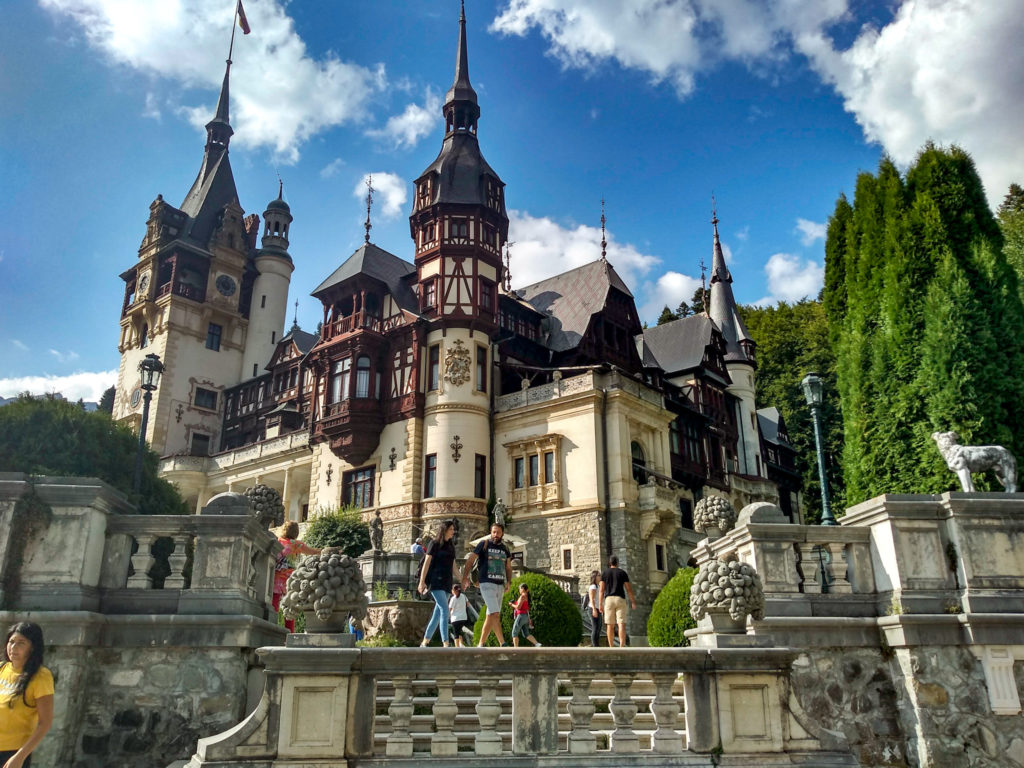“The Bucegi Mountain Royal family residence”.

See photos
Where is Sinaia?
Sinaia is bout 40 miles northwest of Ploiești and 30 miles south of Brașov, in the mountainous area of the Prahova River valley, just east of the Bucegi Mountains.
Getting there
Our visit to Sinaia was a day trip from Busteni, our journey from Busteni to Sinaia taken on the train.
Places of interest
Peleș Castle
Peles Castle is accessible on foot, a 25 minute walk from the train station, up a steep hill. Alternatively, there is the T2 bus, which runs from the station up to the Castle entrance for 2 Lei each.
Consistently referred to as a castle, it has the grandeur and dignity of a palace. Built in a blend of Neo-Renaissance and Gothic Revival styles similar to castles in Bavaria, Germany.
Comprised of over 170 rooms, many of them lavishly styled, furnished, and decorated in themes from around the world. The castle has collections of statues, paintings, furniture, arms and armour, tapestries, and rugs.
A monumental statue of King Carol I soars above the main entrance. Along with many other Carrara marble statues positioned in the seven Italian neo-Renaissance terrace gardens. Hosting fountains, urns, lions, marble paths, and other decorative sculptures.
The castle is a sanctuary to a collection of nearly 2000 paintings.
The public is permitted to visit with guided tours. The opening times and entry fee can be found on the Peles Castle website.

Pelișor Castle
Designed in the Art Nouveau style in the same complex as the larger Peles Castle. Decided in 2006, Pelișor Castle, a long standing museum and tourist site would become the legal property of King Michael I of Romania. Leasing it back to the Romanian State in order for it to remain as a museum.
Dimitrie Ghica Park
A beautiful park is Dimitrie Ghica. A nice walk to incorporated on the way to Peles Castle. Located in the park, is Sinaia casino. No longer a casino, now a conference centre.


Sinaia Monastery
The construction of the monastery took place between 1690 and 1695. A monastery, that takes a form of a fortress with each of the four walls made of stone. In 1885 the then prior of the monastery established a museum in the south wing, housing religious artifacts.
